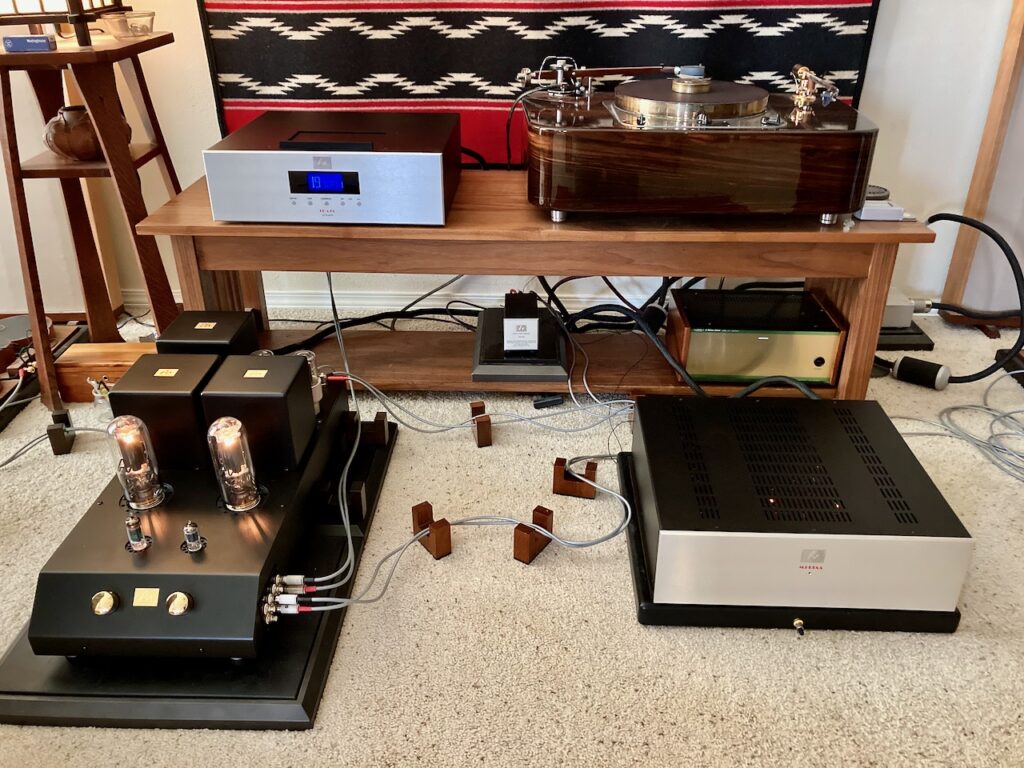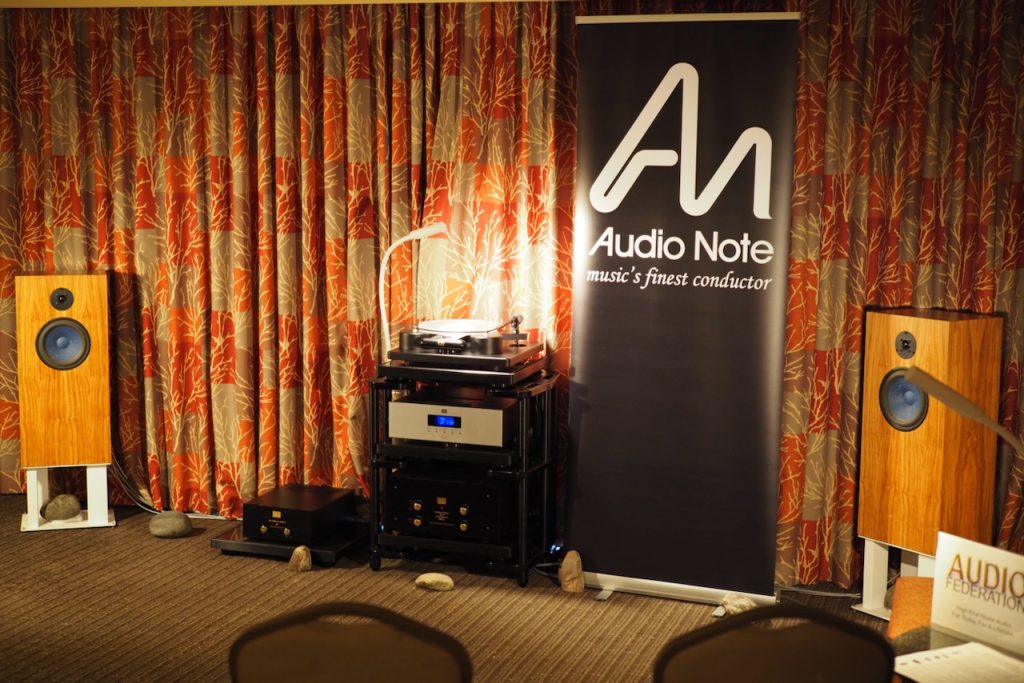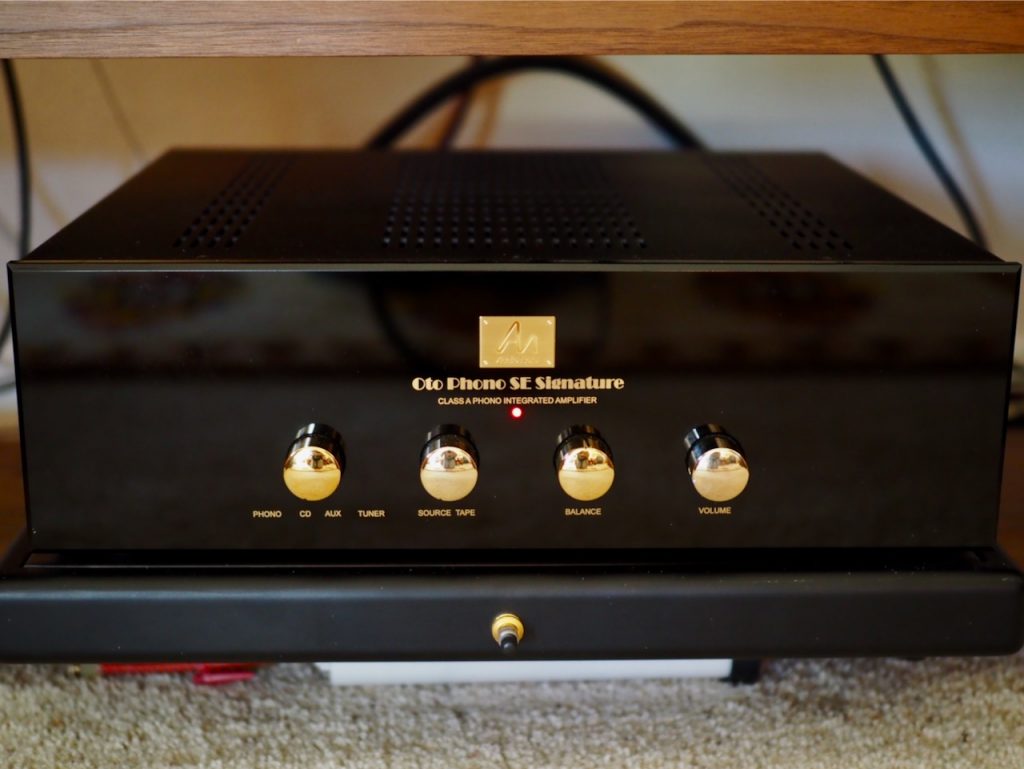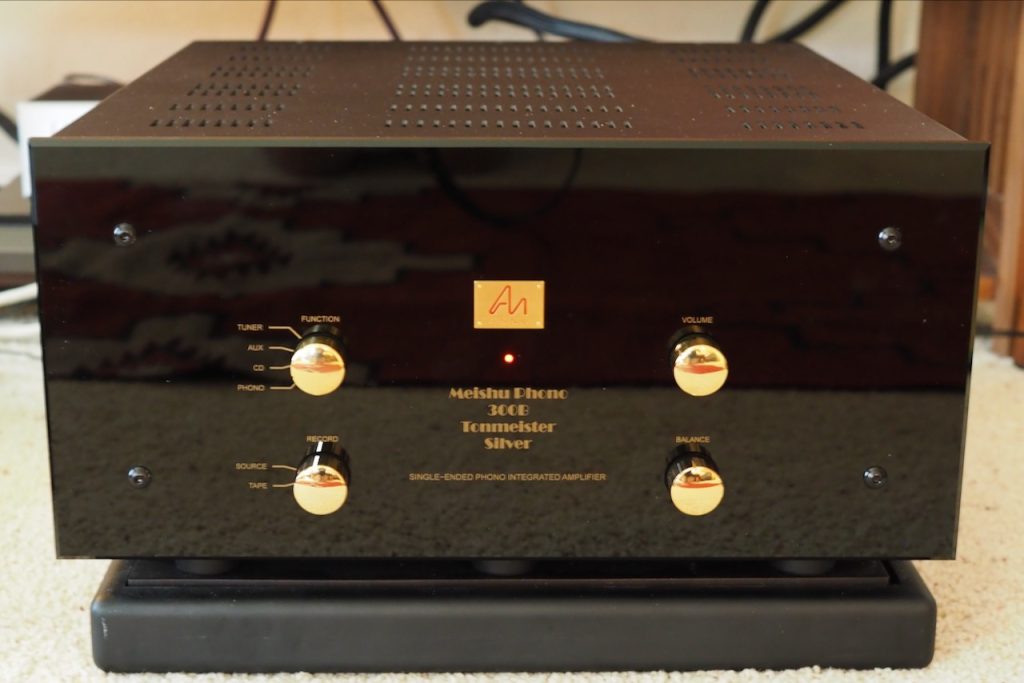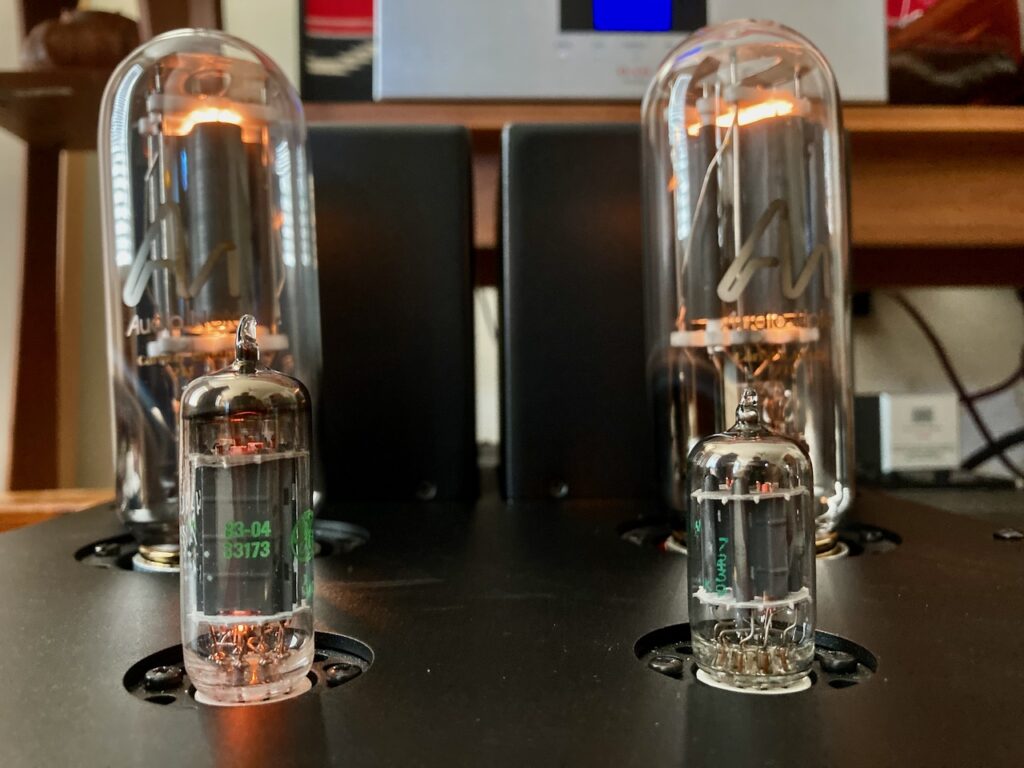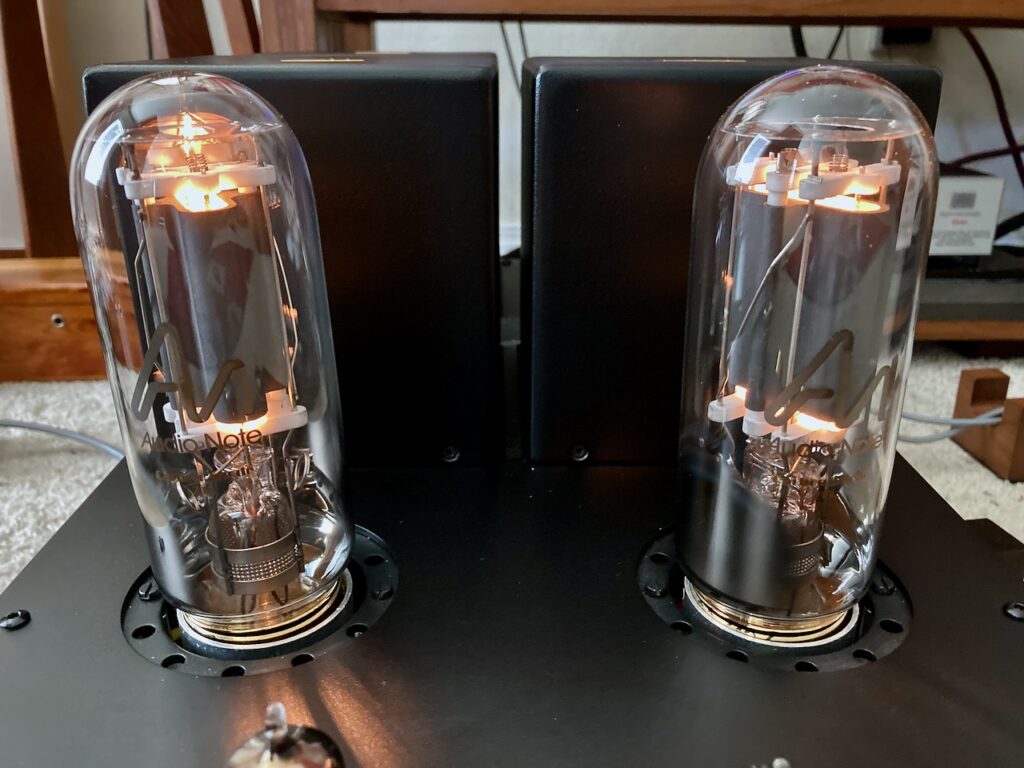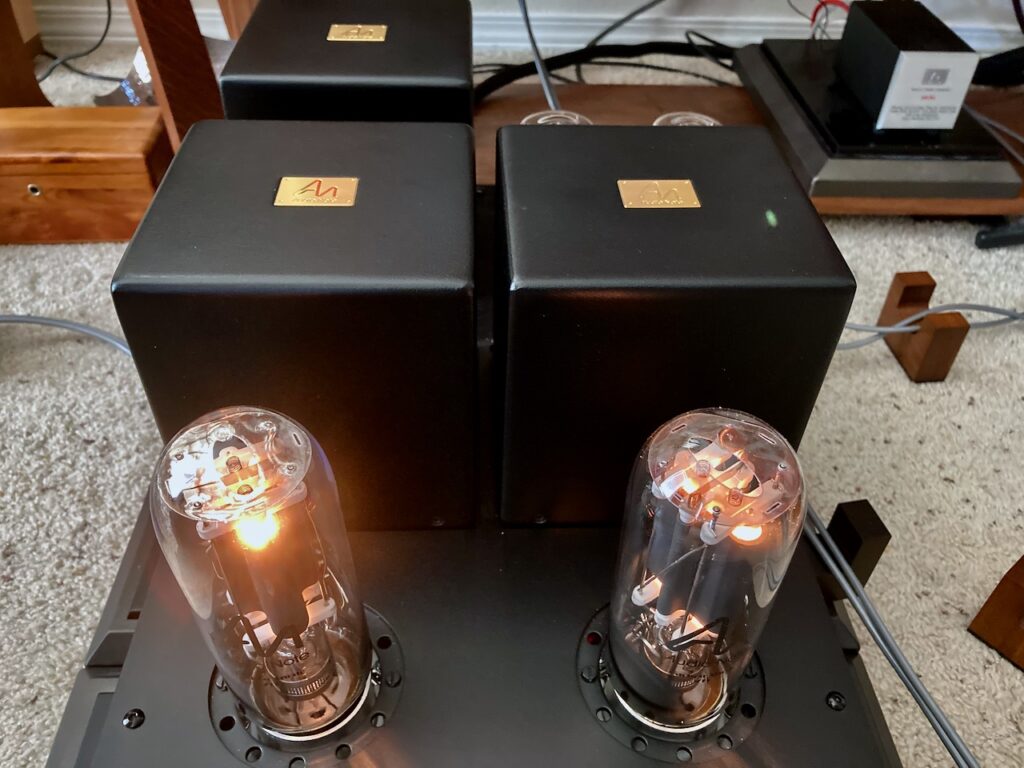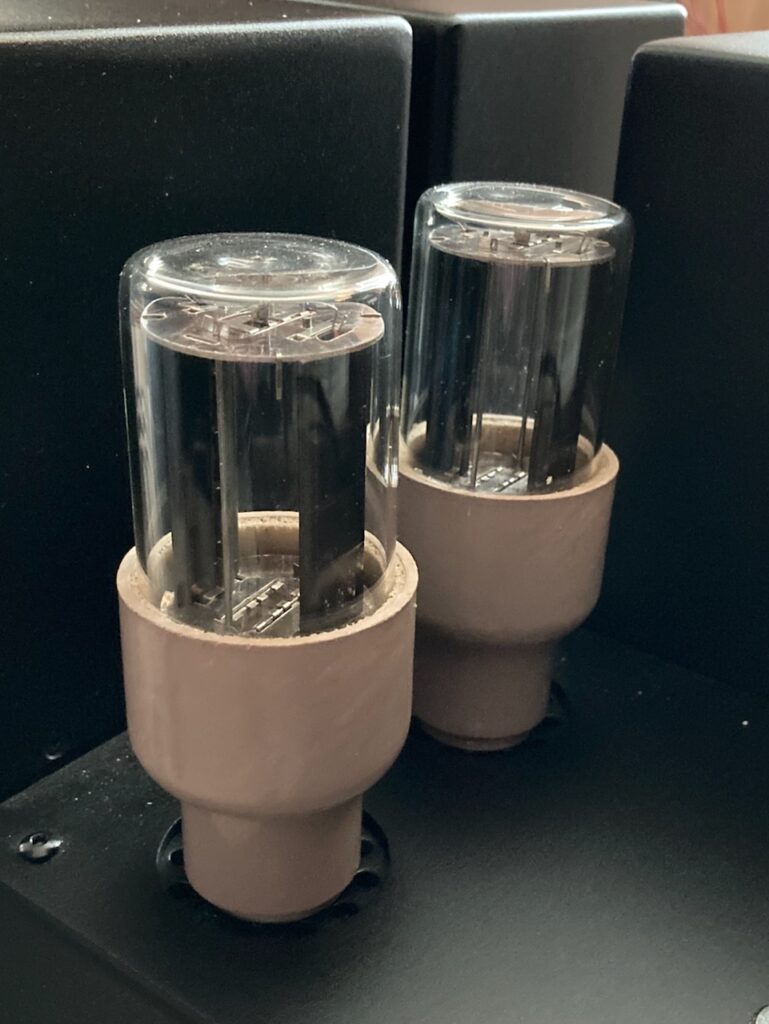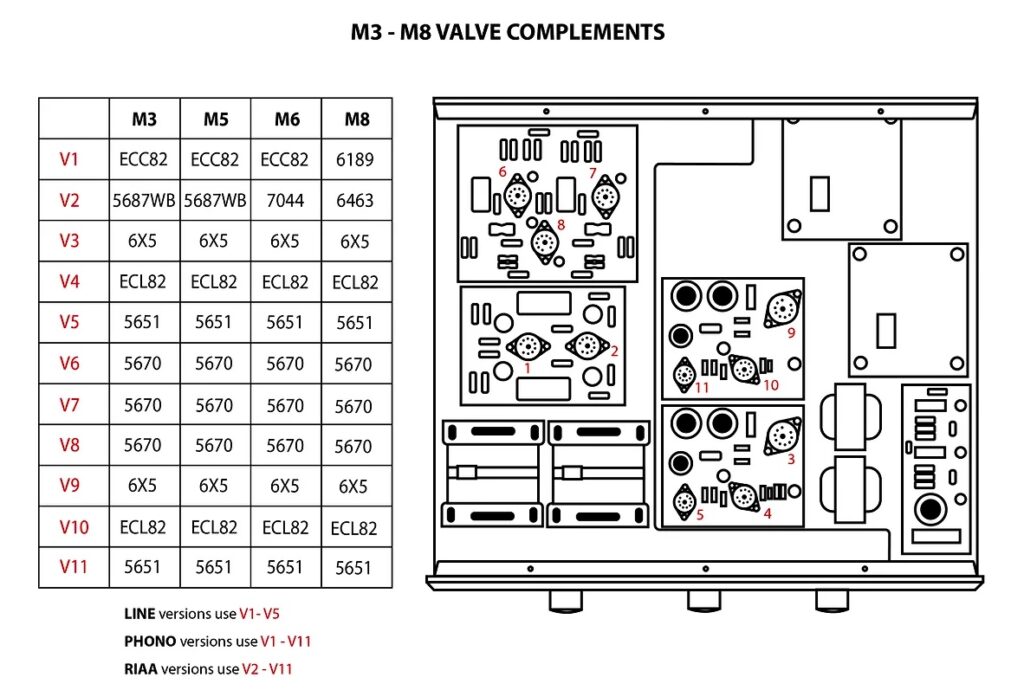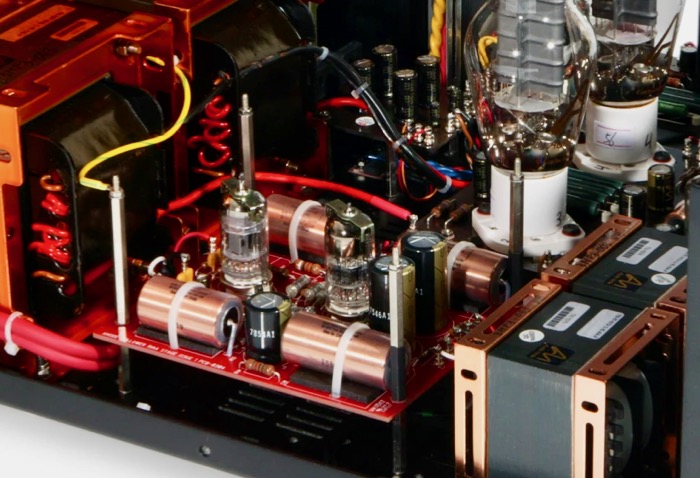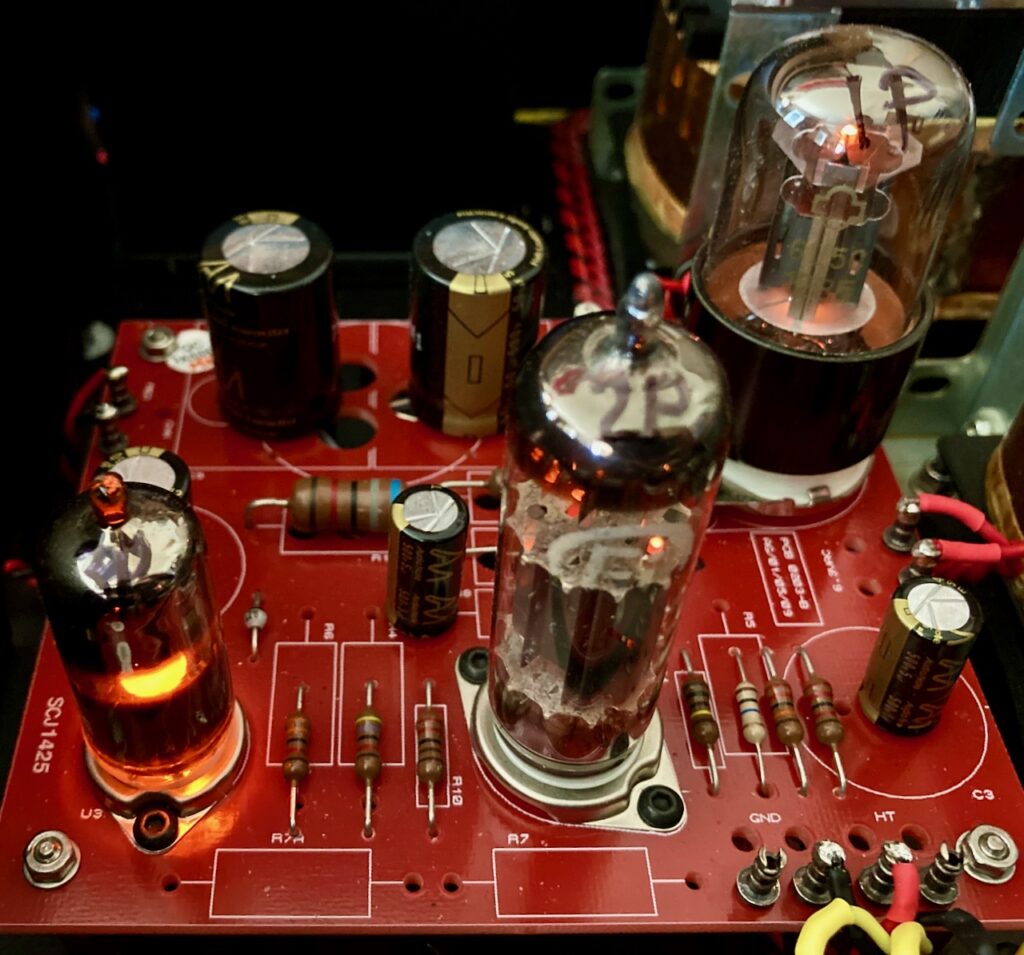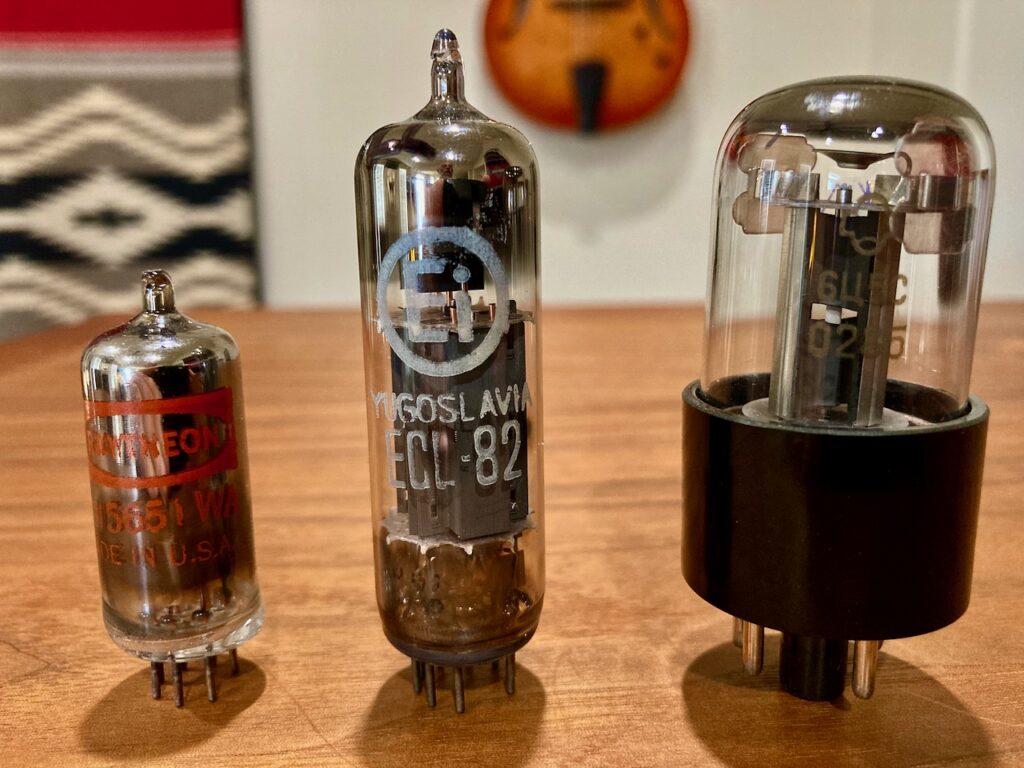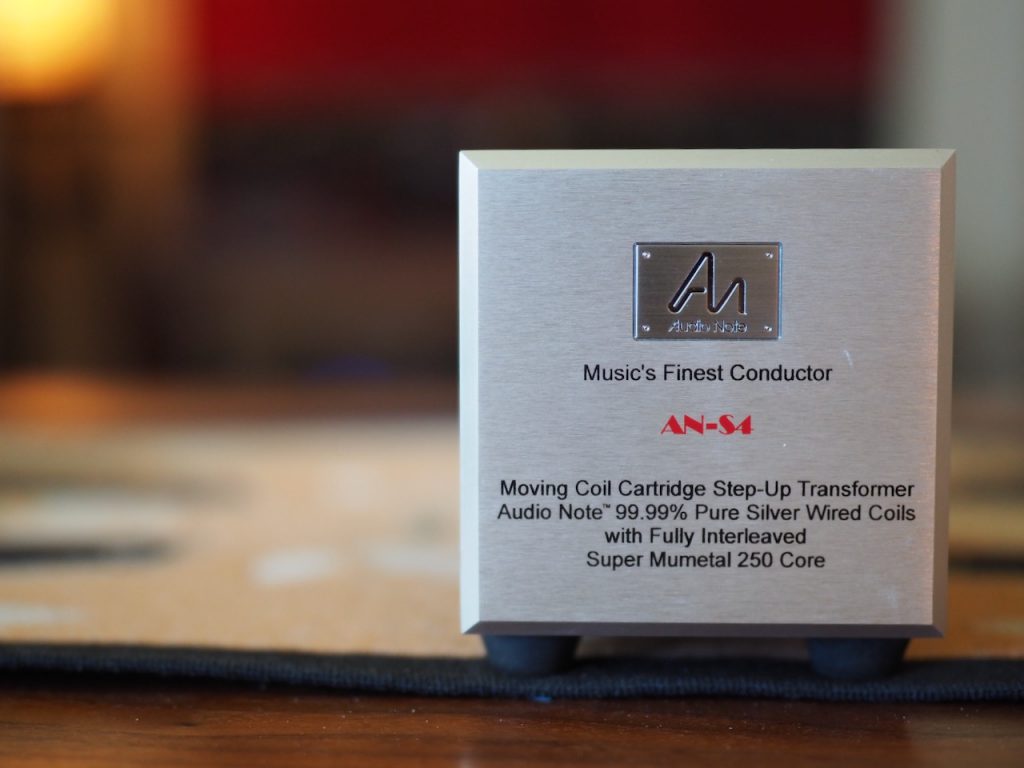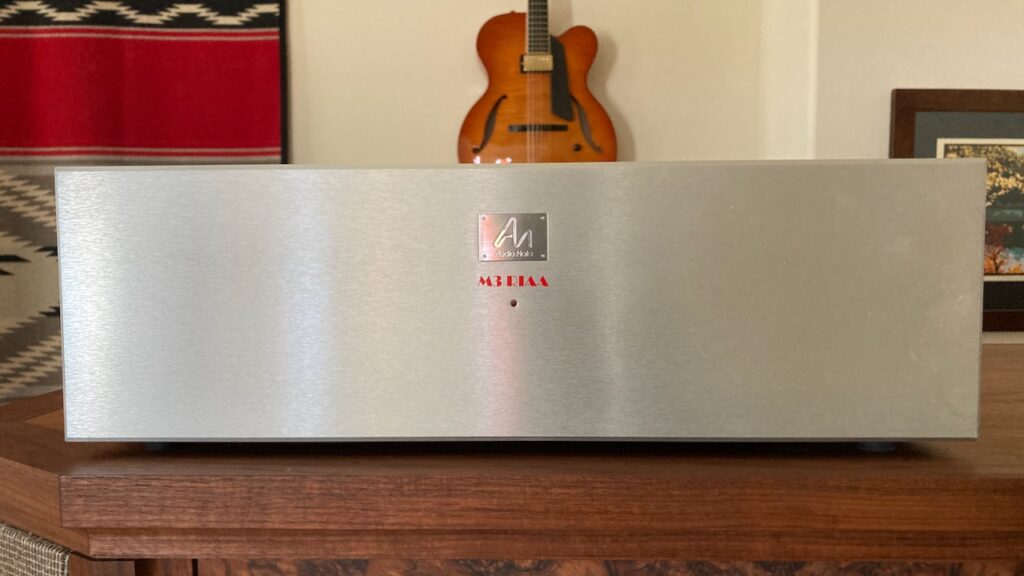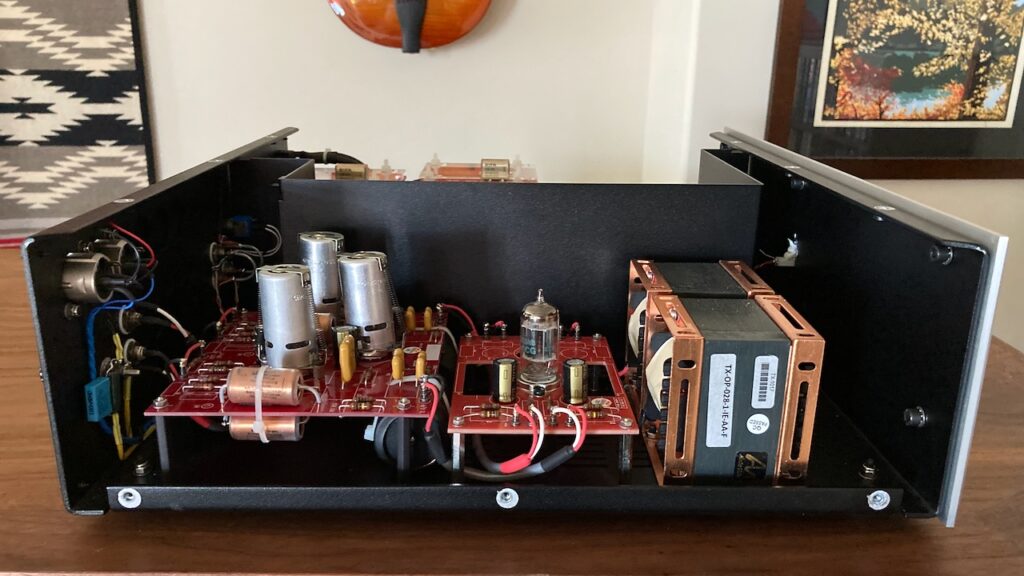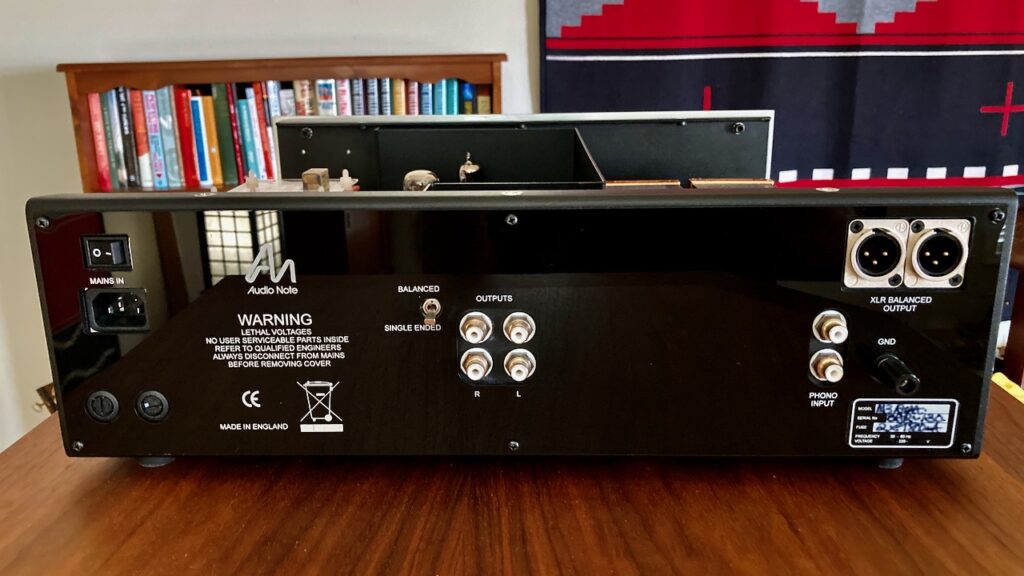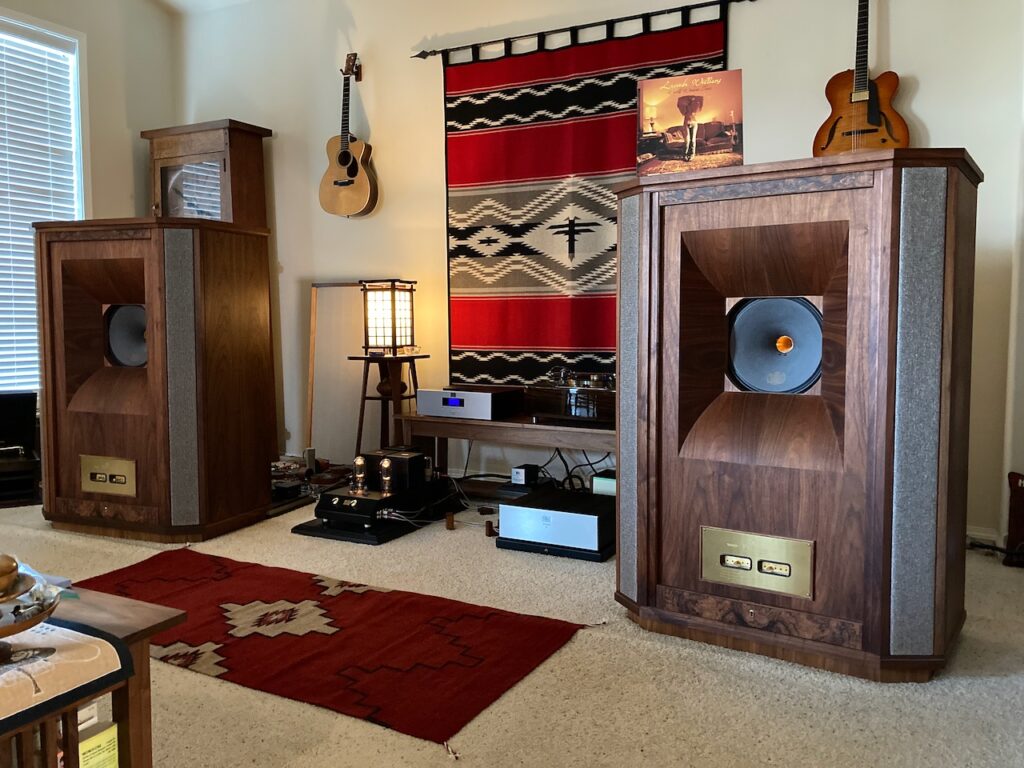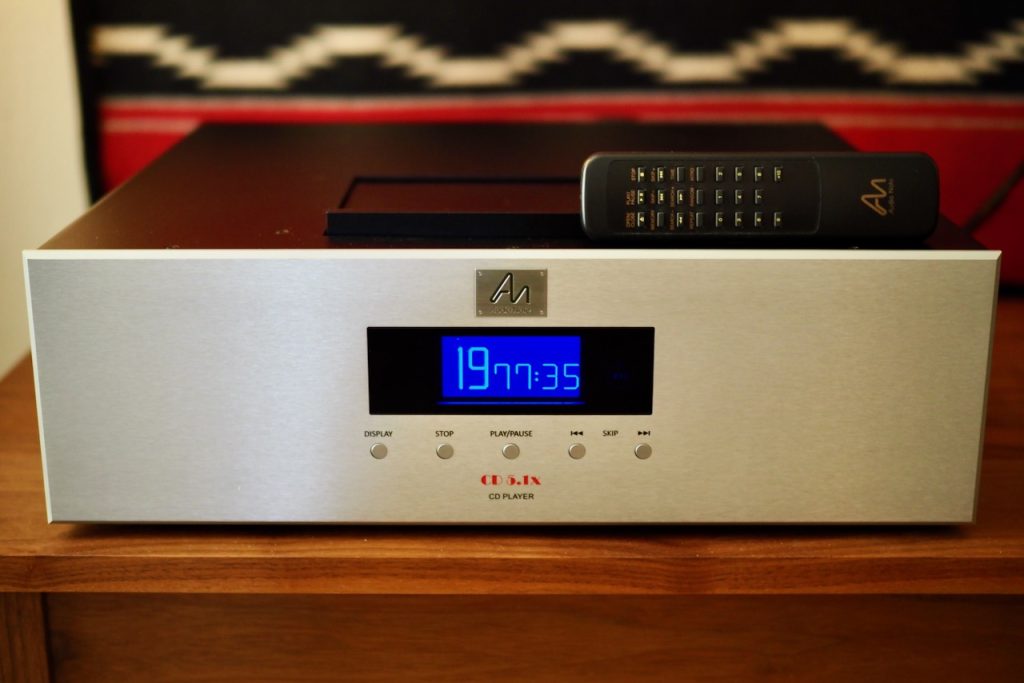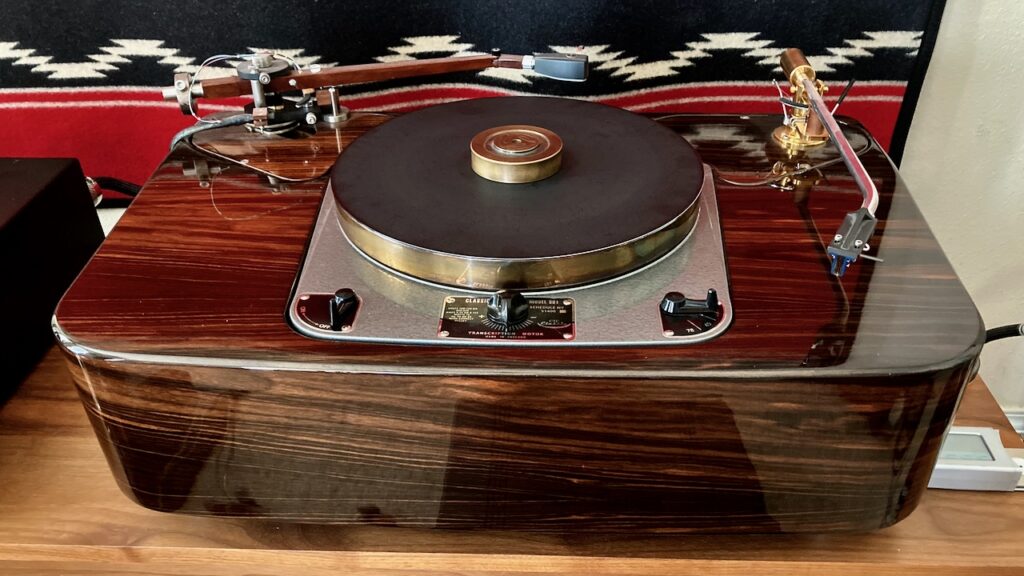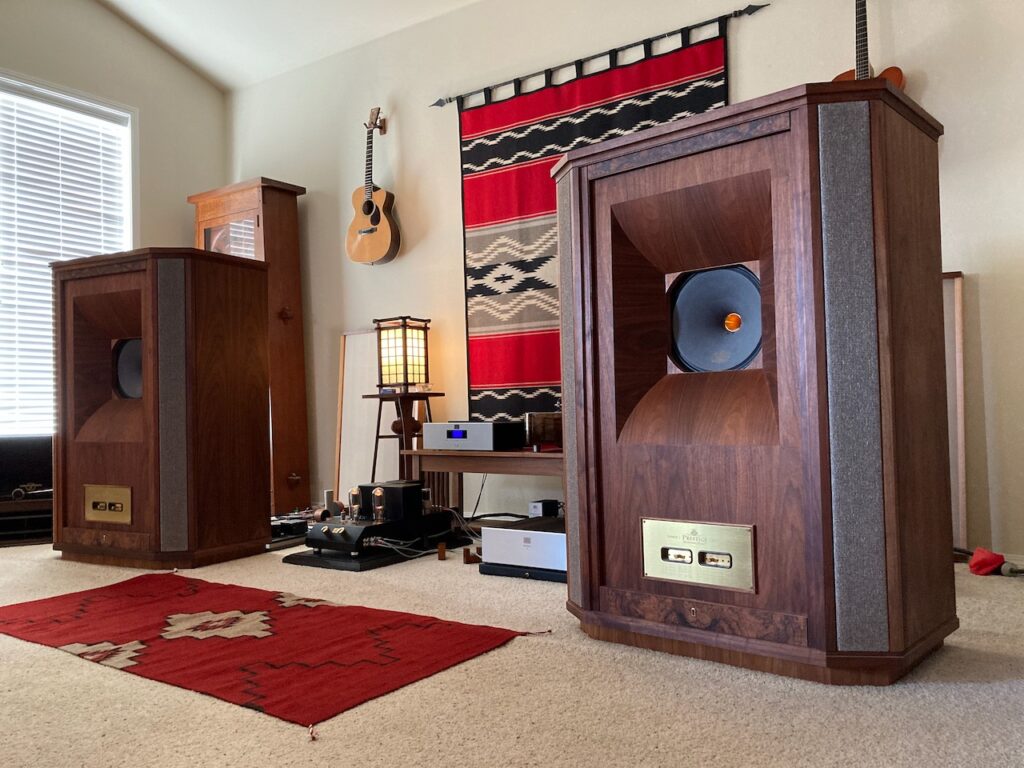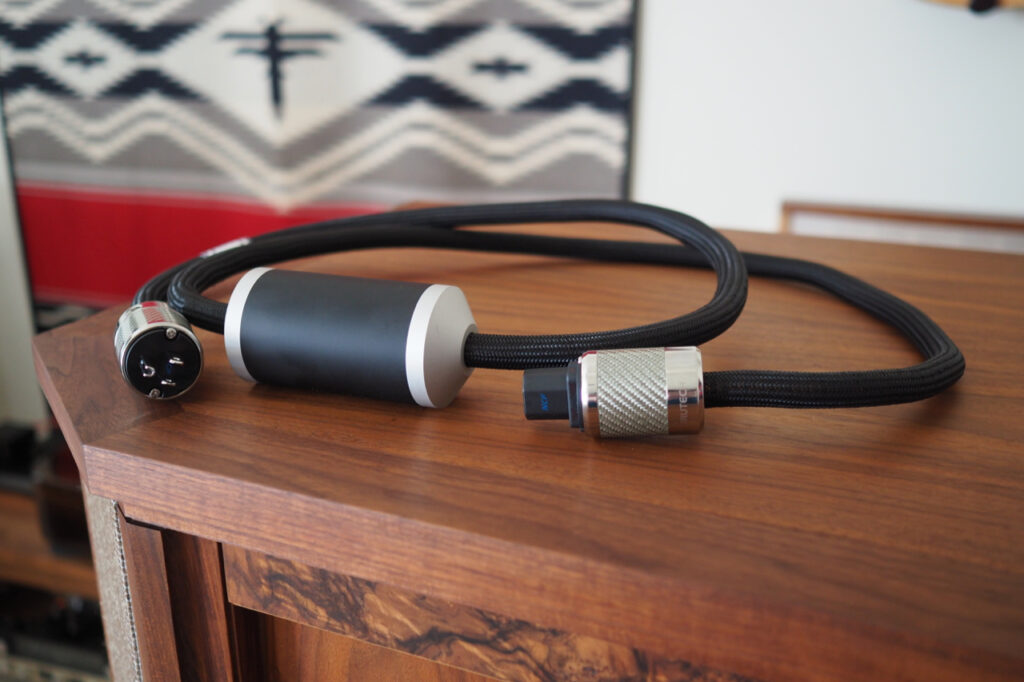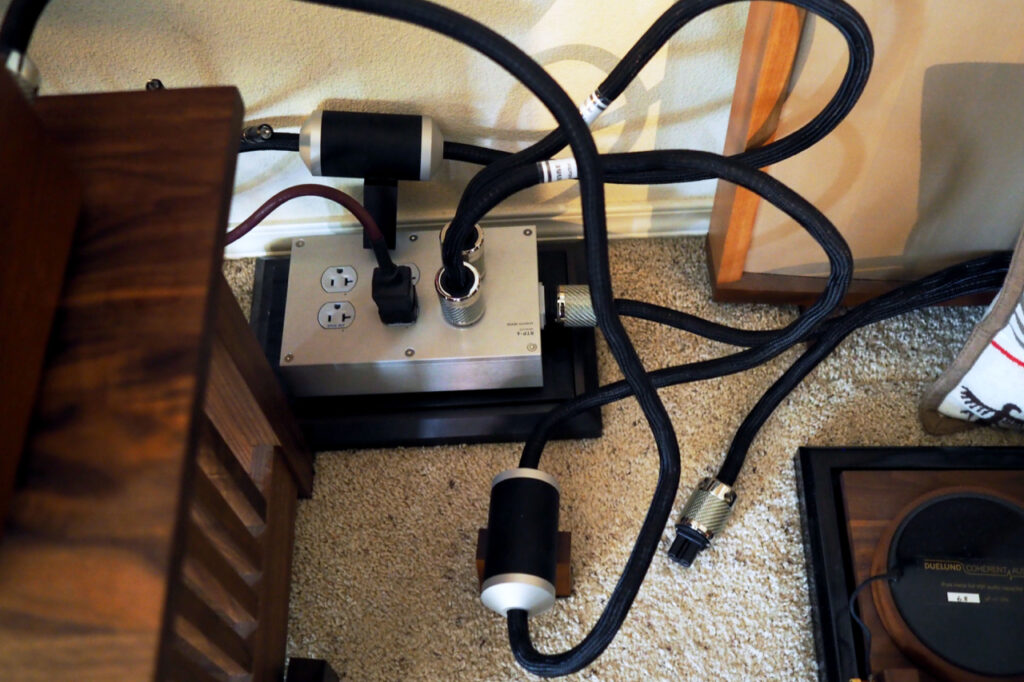The full review of the Audio Note (UK) Tomei 211 SET integrated amplifier and M3 RIAA phono stage has now been published at Positive Feedback HERE. Enjoy!
As is my custom, I like to provide readers of Jeff's Place a preview of upcoming feature articles for Positive Feedback, which in this case is the combination of the Audio Note (UK) Tomei 211 SET integrated amplifier and M3 RIAA phono preamplifier.
The full feature article will be coming to Positive Feedback in the next few weeks, so stay tuned for that.
Enjoy!
The Audio Note (UK) Tomei 211 SET Integrated Amplifier and M3 RIAA Phono Preamplifier!
I’ve been pondering how best to write up this article about my listening experiences with the Audio Note (UK) Tomei 211 single-ended-triode. (SET) integrated amplifier, and M3 RIAA phono preamplifier, for a while now.
I’ll start by saying the Tomei 211 integrated amplifier (left) and M3 RIAA phono preamplifier (right) are easily the highest performing amplification combination I have encountered, and they offer performance characteristics that extend well beyond normal hi-fi considerations for the playback of recorded music in the home.
Before I go into detail about my perceptions of their performance, and the ways they break new ground in performance, let me give you a little background about how my performance perceptions have evolved as I have explored the Audio Note (UK) “performance level system” for integrated amplifiers.
Many audio enthusiasts piece together a complete audio system over time by choosing components that have reviewed well in audio publications. They choose loudspeakers from one manufacturer, amplification components from another manufacturer, source components from yet another manufacturer, and a cable loom from multiple other manufacturers.
All those components come from designers that have varying perspectives about what high-fidelity should be in audio, and that combined with the biases introduced by audio reviewers, means that the challenges associated with assembling a complete audio system with components that work well together are considerable.
Randomly assembling an audio system from audio components that have reviewed well in audio publications rarely works out well. In fact, some of the worst sounding audio systems I have heard followed an approach of picking system components from audio writers ‘recommended components’ lists with the hope that they will all work synergistically together to provide pleasing results.
A better approach than playing a musically lethal form of audio ‘Russian roulette’ is to discuss what you want in a home audio system with a knowledgeable audio dealer, one who can then guide you in building an audio system that matches your listening preferences, and budget, to give a satisfying result that you can enjoy for years to come.
Essentially, that latter ‘guided approach' is at the heart of Peter Qvortrup’s “performance level system” philosophy for putting together a satisfying home audio system with his Audio Note (UK) components.
The goal of Peter’s “performance level system" is to help Audio Note (UK) customers and dealers build satisfying audio systems by combining simpatico components at complementary levels of performance & price, from source to loudspeakers (and everything in between).
Peter eliminates perhaps the biggest variable of all in building a home audio system - the variability in component voicing from different designers - by designing components that are all optimized to work synergistically with each other, from sources to loudspeakers, to create a complete audio system.
For each component at a given performance level, the design process starts with a circuit that is as "un-contaminating as possible” in order to preserve the purity of the source signal.
The circuit is then built up by choosing circuit components by ear that are the most complimentary in terms of meeting Peter’s priorities of “accuracy, authenticity, and authority” at a given price-performance level in the playback of recordings.
But that’s not all, because as the design process proceeds, the voicing process for components is according to Peter’s “comparison by contrast” method, where the components are optimized to play back recordings across a wide variety of musical genres, and eras of the recording arts, in order to provide listeners with the best possible music listening experience for whatever kind of music they enjoy listening to.
The above component research & development process implies that not only are individual components ‘tuned by ear’, but also the entire audio system ‘level’, from source to loudspeakers, which requires “… time, knowledge, good ears, patience – and a good system in which to insert the unit and listen to it,” according to Andy Groves, Audio Note (UK) Designer in Chief.
There are seven ‘levels’ of performance in the Audio Note (UK) product lines, from Zero to Six.
As one ascends up through the performance level system, each successive level is designed "... to ever greater levels of ability to contrast dynamics, timbre and recording quality …”, in order to provide listeners the "best of what the artists and their art can provide" from their albums, at that particular cost-performance level.
If you are a regular reader of my articles, you know I am a huge fan of high-performance integrated amplifiers, and I believe they are the best choice for most audio enthusiasts seeking to build a high-fidelity audio system.
With a high-performance integrated amplifier you can eliminate the complexity of separate components (e.g. separate preamplifiers combined with stereo or monaural amplifiers), and the additional interconnects and power cords needed to connect them.
Chances are, for the same amount of money spent on a high-performance integrated amplifier based audio system, compared to the same amount of money spent on a separate components based audio system, you will realize a higher level of performance with an integrated amplifier based audio system.
There’s also fewer potential interface issues with integrated amplifiers, less components to malfunction and maintain, and lesser amounts of costly interconnects and power cables needed to complete the system.
In my previous articles about the Audio Note (UK) Level 2 Oto Phono SE Signature (above) and the Level 3 Meishu Phono Silver Tonmeister 300B integrated amplifiers (below), they both included internal phono preamplifiers complimentary to their performance level.
However, with the Level 4 Tomei 211 SET integrated amplifier, it is simply too large and heavy to fit a phono preamplifier into its chassis as ambitious as the Level 3 M3 RIAA phono preamplifier.
So, for this article I will be writing about the Tomei 211 SET and M3 RIAA as an ‘integrated amplifier’ pairing so I can offer impressions about their performance in comparison to that of the Meishu Phono Silver Tonmeister 300B integrated amplifier that I previously reviewed.
Tomei 211 SET Integrated Amplifier and M3 RIAA Phono Preamplifier Technical Descriptions
Let’s start with the Tomei 211 SET integrated amplifier (below).
Level 4 Tomei 211 SET Integrated Amplifier ($59,587.00 USD)
When entering into the rarefied air of Audio Note (UK) Level 4 amplification, the circuit that is deemed as "un-contaminating as possible” is a circuit based on the legendary Ongaku 211 single-ended-triode (SET) integrated amplifier.
The circuit’s Level 4 design criteria includes pure Class A operation, zero negative feedback, a single ended output stage, valve rectification, and directly heated triode operation.
The Level 4 materials and components of the circuit features a combination of copper and silver wire in the in-house designed and manufactured output transformers, and Audio Note (UK) tantalum resistors & foil capacitors.
The valve complement for this circuit starts at the back of the chassis with a pair of 5R4WGB rectifiers, with the ECC82/12AU7 input and 7044 driver valves at the front of the chassis, and the 211 power valves located towards the middle of the chassis.
The overall technical specifications for the Tomei are an input impedance of 100 kΩ, input sensitivity is 450 mV for full output, for a maximum output of 20 watts per channel, and a channel balance of +/- 0.3 dB.
The Tomei is a big and heavy amplifier, measuring 12 inches high, 12 inches wide, and 25 inches deep, weighing in at approximately 61 pounds.
I recommended care when unpacking your new Tomei, due to its awkward dimensions and weight balance. Use two people - one holding the front of the chassis, and one holding the back of the chassis - to lift it out of its shipping container, and to place it in your audio system.
Let’s do a ‘walk around’ of the Tomei. On the left front panel is a source selection switch, and on the right of the front panel is a volume control (above).
The volume control is a stepped attenuator, with 23 steps. The source signals pass through only two left & right channel matched resistors - a purist approach - for each volume setting.
On the front right side of chassis are four silver line level inputs (above).
On the front right top of the chassis is a New Old Stock (NOS) USA manufactured Joint Army Navy (JAN) GE ECC82/12AU7/5814A indirectly heated twin triode input valve (above).
On the front left top of the chassis is a driver valve, a NOS USA manufactured GE 7044 twin triode. This medium-mu twin triode was originally intended as cathode-follower buffer for high-speed computer applications back in the day.
Behind the input & driver valves, towards the middle of the chassis, are a pair of 211 output valves. The two 211/4242E are current production power/output valves developed by Audio Note (UK) in partnership with Psvane (China) to Audio Note (UK)’s specifications, and feature a molybdenum anode like the great 211 valves of yore (above).
Directly behind the 211 valves are Audio Note (UK)’s in-house designed and manufactured copper/silver wired output transformers (above).
Directly behind the left output transformer is the power transformer, and to its right are two rectifiers (above).
The rectifiers are NOS JAN CAHG 5R4WGB Chatham Electronics valves that were USA made by Tung-Sol. These full wave rectifiers have a high peak inverse voltage rating, and utilize a hard glass bulb that is shock mounted in a silicone rubber skirted base (above).
These robust rectifiers were originally developed for military and government use, and could be used in aircraft applications up to 60,000 feet. This is my first experience with these ruggedized USA military rectifiers, and they are impressively crafted.
Directly behind the rectifiers you see the four silver binding posts for the left and right loudspeakers.
On the back of the chassis (no photo) are the power switch, an IEC 320 AC socket for a power cord, a ground post for connecting source components that use a separate ground terminal, and mains fuses.
Underneath the chassis are six footers to support the Tomei.
Level 3 M3 RIAA Phono Preamplifier ($11,314.00 USD)
Classic valve phono stages tend to fall into two basic design genres: those like the Marantz Model 7 that use negative feedback (NFB) to actively achieve RIAA phono equalization; and those like the Harman Kardon Citation IV that use no NFB, and instead use capacitors and resistors (CR) to achieve passive RIAA equalization.
So, by analogy, if the Marantz Model 7 phono stage was a 'push-pull amplifier using negative feedback' in its design, then the Harman Kardon Citation IV phono stage would be like a 'single-ended-triode amplifier' (SET) with no negative feedback used in its design.
As one would expect from Audio Note (UK), the M3 RIAA phono preamplifier (above) is more like the latter classic valve phono stage example, with no NFB, and the use of passive CR RIAA equalization.
The M3 RIAA phono stage is the first step of M3-M8 pre-amplifier family, all of which share the same circuit topology across the range (M3, M5, M6, and M8), with parts quality upgraded level by level within the range (user manual HERE).
The overall specifications for the M3 RIAA phono preamplifier are an input sensitivity of 47 kΩ, an input sensitivity of 126 mV for 1 V output, an output impedance of <10 Ohms, a weight of approximately 37.5 pounds, and dimensions of 5.5 inches high, by 17.3 inches wide, and 16 inches deep.
Ten vacuum tubes are used in the M3 RIAA’s circuits: a single 5687 WB for V2, 2 x 6U5C (6X5 equivalent) in V3 & V9, 2 x ECL82 in V4 & V10, 2 x 5651WA in V5 & V11, and 3 x 5670W/2C51W in V6-8 (above).
The M3 RIAA features pure Class A operation, zero negative feedback, a single-ended circuit topology, valve rectification, and materials and components quality that fulfill Audio Note (UK) Level 3 design criteria.
While this is the same design criteria as the phono stage in the Level 3 Meishu Phono Silver Tonmeister 300B integrated amplifier (above), the Level M3 RIAA implements a much higher degree of sophistication, which I found elevated its performance well beyond that of the Meishu’s already excellent phono stage performance.
Let’s take a look inside the M3 RIAA phono preamplifier.
The M3 RIAA features an NOS Phillips JAN 5687WB double triode valve in the line stage (above).
The line stage is powered by a NOS Soviet 6U5C (6X5 equivalent) full wave rectifier power supply (PSU), based on Andy Grove’s M10 Galahad PSU design (above, more detail HERE).
The power supply features an ECL82 for voltage regulation, and a NOS Raytheon 5651WA diode as a voltage stabilizer.
The M3 has a moving-magnet phono-stage which uses three NOS GE 5670W/2C51W twin triode (with separate cathodes) valves, Audio Note (UK) copper foil signal capacitors, and a dedicated M10 Galahad style of power supply.
Given the moving-magnet phono stage, those M3 owners using moving-coil phonograph cartridges - most of you - will need to add one of Audio Note (UK)’s step-up transformers (SUTs).
For example, in this article I am using the Audio Note (UK) combination of a custom silver AN-S4 SUT (above) with the IO I moving-coil cartridge to feed the signal to the M3 RIAA.
The M3 utilizes Audio Note (UK) copper wiring, a mix of their standard & tantalum resistors, copper foil signal capacitors, and custom electrolytic capacitors in the circuit.
The M3 also uses Audio Note (UK) in-house designed and manufactured output transformers with I-E M4 cores and copper windings.
The M3 RIAA phono pre weighs more than a lot of power amplifiers at 35 pounds, and like the Tomei, it qualifies as a free-weight lifting workout getting it out of its shipping container and installed in the audio system.
Let’s do a ‘walk around’ of the M3 RIAA.
There’s not a lot to see on the front panel of the M3, just a solitary indicator that lights to show the M3 is powered up (above).
On the right side you see the power transformers and power supplies (mostly hidden behind the transformers), with a right side top view below.
On the left side you see the phono and line stages, and output transformers.
On the back panel, starting on the left, are the power switch (top) and mains inlet IEC socket below it, below those are two fuse holders.
Towards the middle is the switch for selecting either balanced or single-ended outputs (the balanced and single ended outputs cannot be used at the same time). Two pairs of single ended RCA outputs are provided.
On the right side are a pair of RCA inputs, a ground post, and a pair of XLR balanced outputs.
On the bottom of the chassis the M3 RIAA is rests upon four rubber footers.
Review System
Peter has been demonstrating to me how the synergy effect works with his Audio Note (UK) components, and while all of the Audio Note (UK) components are stellar performers in their own right, I have to say it’s a very significant benefit to be able to have all the components singing together with complimentary voicing.
It's also a real treat to be able to install all the Audio Note (UK) components into my audio system and have them work perfectly together. Plug & play with no fuss or extra effort involved.
The digital source is the Audio Note (UK) Level 3 CD 5.1x Red Book CD player, which connects to the Tomei 211 amp with a pair of Audio Note (UK) AN-V XLR to RCA "nitro-boost" silver interconnects.
For the analog source, my CTC Garrard 301 has an Audio Note IO I moving-coil phono cartridge mounted to a Schick graphite headshell, with Acoustic Revive PC-TripleC/EX silver headshell leads, mounted to a Schick tonearm.
The tonearm leads connect to an Audio Note (UK) AN-S4 SUT, which then connects to the Audio Note (UK) Level 3 M3 RIAA phono preamplifier - and Level 4 Tomei 211 SET integrated amplifier - with Audio Note (UK) AN-V silver interconnects.
The Level 4 Tomei 211 SET integrated amplifier connects to my Tannoy Westminster Royal SE loudspeakers with Audio Note (UK) AN-SPe silver loudspeaker cables.
My Tannoy Westminster Royal SE loudspeakers are rewired internally with Western Electric WE16GA tinned-copper wire, and utilize external Duelund Coherent Audio crossovers featuring CAST silver components in the high-frequency portion of the crossover, and CAST copper components in the low-frequency portion of the crossover.
All the power cables are Acoustic Revive Absolute (sources) or Power Reference TripleC NCF.
The power cables all connect to an Acoustic Revive RPT-6 Absolute NCF Power Distributor, which in turn connects to an AC wall outlet with an Acoustic Revive Absolute power cord.
My AC wall outlet combines an Acoustic Revive CB-1DB receptacle base plate, CFRP-1F carbon fiber outlet plate, and an Acoustic Revive modified Oyaide R-1 receptacle.
Due to its large size, the Tomei 211 amp rests upon a pair of Acoustic Revive RST-38 vibration isolation platforms, and the AN-S4 SUT sits upon an Acoustic Revive TB-38 vibration isolation platform.
The M3 RIAA phono preamplifier rests upon an Acoustic Revive RAF-48 air isolation platform.
All of the cables are suspended with Acoustic Revive RCI-3HK cable lifts.
Listening Impressions
Ok, that's all for now. Stay tuned for more!
As always, thanks for stopping by, and may the tone be with you!




